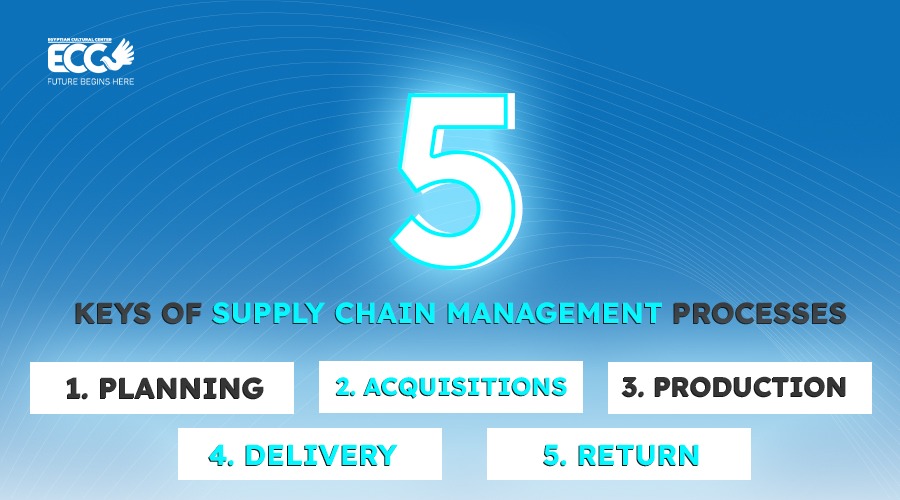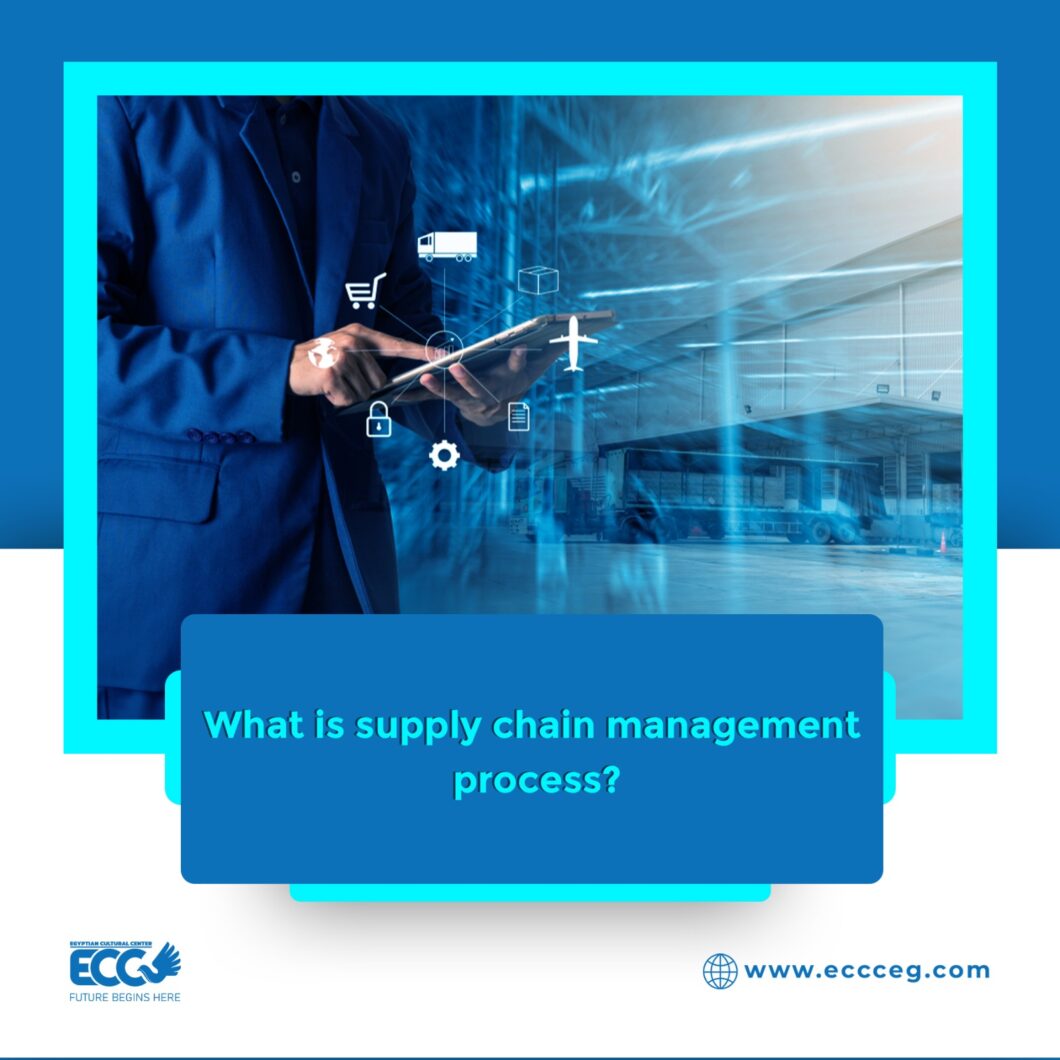Supply chain management (SCM) consists of integrating, synchronizing and orchestrating all the physical, financial and information flows necessary so that organizations and their partners in the value chain can meet the demand for their goods. and services.
Why is supply chain management important?
Supply chains bring the right goods and services to the right customers at the right time through a network of connected activities. For this reason, they are considered a powerful engine of economic activity.
If supply chains fail, economic activity and business results can suffer.
To contain costs and improve efficiency, supply chain management has traditionally focused on the principles of lean and lean production, which in practice means issuing new orders only when production decreases. Inventory. In this way, the waste of productive capacity and available stock is minimized, but the reserve for unforeseen shortage stages is also eliminated.
Read More: MBA in Operations Management – A Complete Guide for 2024
What is a supply chain management strategy?
The ultimate goal of a supply chain management strategy is to contribute to the company’s objectives, drive its aspirations, and gain a competitive advantage. This involves more than just optimizing end-to-end supply chain processes: it also involves adaptation to operating and business models and even their potential transformation.
Some recent factors of change in the supply chain are the expansion of digital business models, the commitment to selling solutions and not just products, the diversity of customer expectations, and the increasing pace of disruptive changes. In this volatile environment, your supply chain strategy will add value by making it easier, faster, safer, and more economical for the company to change operating models.
Some supply chains will adopt modular operating models that allow components and capabilities to be grouped and reorganized, as well as changing course based on circumstances. Gartner describes this evolution toward greater flexibility as becoming more composable. Other supply chain managers will focus on developing an end-to-end integrated digital roadmap
Supply chain management contributes to several business objectives, such as sustainability and diversity, equality, and inclusion. But, regardless of the specific initiatives—and their scope—organizations must evaluate the current and future state of their supply chains, and prioritize those actions that allow them to cover their gaps.
Read More: What is a DBA certificate: Doctorate in Business Administration’s Full Guide
5 Keys of supply chain management processes

The supply chain management (SCM) process consists of the five steps necessary to create and deliver quality products and services to customers, on time and within established budgets. SCM helps companies establish clear plans to acquire resources, create and deliver products, and maintain positive relationships with customers.
1- Planning
To ensure the existence of inventories for the entire manufacturing process, a company must analyze demand, plan raw materials and supplies, and calculate production and distribution needs. In this phase, you must also determine which resources and operations will be produced internally and which will have to be outsourced and define the requirements for this. A key issue to consider is the fluctuation in demand, which can affect the availability of resources and the necessary scope of supply.
2- Acquisitions
Next, you must evaluate and select the suppliers who can provide the necessary materials and services within the budget and in the most efficient manner. The goal is to find the right resources to meet production requirements and ensure they arrive on time, without interruptions or unnecessary costs. Related procedures include contracting suppliers, inspection of incoming goods, and warehousing.
3- Production
In producing the final product, it is essential to ensure that it meets consumer requirements (quality) and the volume of demand (quantity). This phase mainly includes manufacturing, inspection, and packaging of the products. Related processes include capacity and resource management, continuous production process improvement, and internal logistics.
Contact with IBAS
4- Delivery
Ensuring smooth product delivery has a direct impact on customer satisfaction and brand image. This process consists of several key systems:
Order management (maintenance of a customer base, order registration, maintenance of a product and price database).
Warehouse management (order preparation, packaging, labeling).
Transportation management (management of product flows, coordination, monitoring, and quality assurance of deliveries).
5- Return
In addition to shipping, it is important to provide customer support, especially regarding merchandise and product returns. This phase, also called reverse logistics, involves a series of procedures: evaluation of the condition of the merchandise, processing of the return, logistics, and referral for recycling or destruction. A hassle-free return or exchange process is just as important as the delivery process, as it influences the customer’s overall experience with the company.
Read More: Leadership vs Management: Understanding The Key Difference
What is supply chain risk management?
Supply chain management must respond to a variety of risks, from those generated internally, such as company operational dynamics and workforce, to those generated externally, such as sociodemographic changes and environmental and climate concerns…
These disruptive changes can have a significant effect on the organization’s performance, cause reputational and economic damage, and threaten its viability.
Supply chain risk management has traditionally relied on visibility, resilience, and agility to improve response to disruptive changes, but the volatility generated during the pandemic overwhelmed many of these strategies. Even before that, supply chains were under pressure.
By evolving to be innovative and responsive to customer needs, most supply chains have also greatly increased their size, complexity, and global reach. This left organizations vulnerable to an even wider range of risks, including some they can hardly control. The pace and variety of disruptive changes have also increased, so that supply chains barely have time to recover from one hit (such as a trade dispute) before receiving the next (such as a natural disaster).
A more effective approach to supply chain management is to reduce the size of the risk target that the supply chain organization has become: its “surface area.” Supply chains that succeed will be able to reduce to less than a third the number of disruptions faced by their response-focused counterparts.
Contact with IBAS
Conclusion
Organizations can approach SCM differently depending on their objectives, the characteristics of their market, and the products they supply. Each of the five phases can be improved by relying on strategies specific to each of them: resource-based representation, transaction cost analysis, materials logistics management, material requirements planning, total quality management, competition based on time, customer relationship management, etc.


